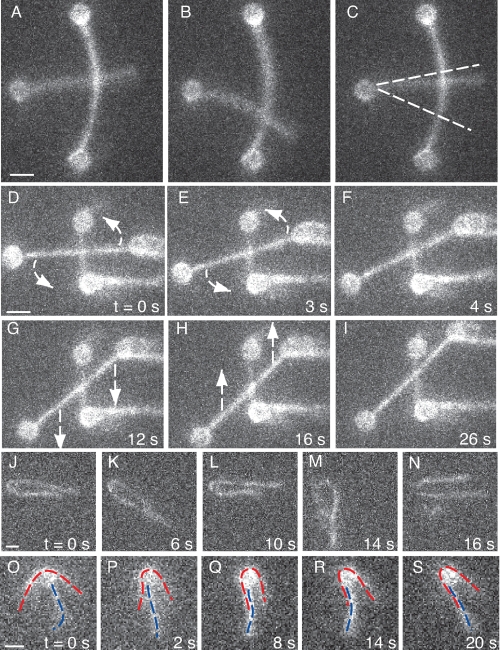FIGURE 3.
Fascin only cross-links actin when filaments are arranged in a parallel orientation. A–C, fascin does not bind in a crossed orientation near 90°. The free end of a filament with only one end bound to a bead was allowed to freely scan over an anchored filament. No binding events were observed. Because of the bend in the filament with both ends anchored to beads, all crossing was near 90° (±10°). Approximately 2.5 μm length of the anchored filament was probed by the free filament end (∼900 potential binding sites). At 1 μm fascin concentration, ∼50% of the available fascin-binding sites should be filled, so the scanning filament should have found a viable binding site if the orientation of the filaments was conducive to binding. Dotted lines indicate the range over which the free filament scanned (supplemental Movie S4). d–I, a pair of crossed filaments was arranged and scanned. No binding events were observed. This pair of filaments was tested over a range of ∼100° and scanned over a 1.5 μm distance at ∼15° increments (supplemental Movie S5). J–N, fascin does not bind in an anti-parallel orientation as shown by this filament wrapped around a nonfluorescent bead. Filament ends diffused together but never remained coupled (supplemental Movie S6). O–S, one filament (red) wraps around a bead that has a second filament (blue) attached. One side of the red filament bundles with the blue filament, but the other does not. This behavior is explained by polarity selection. Coupled with the results from J–N, we can determine that fascin will bind parallel but not anti-parallel filaments (supplemental Movie S7).

